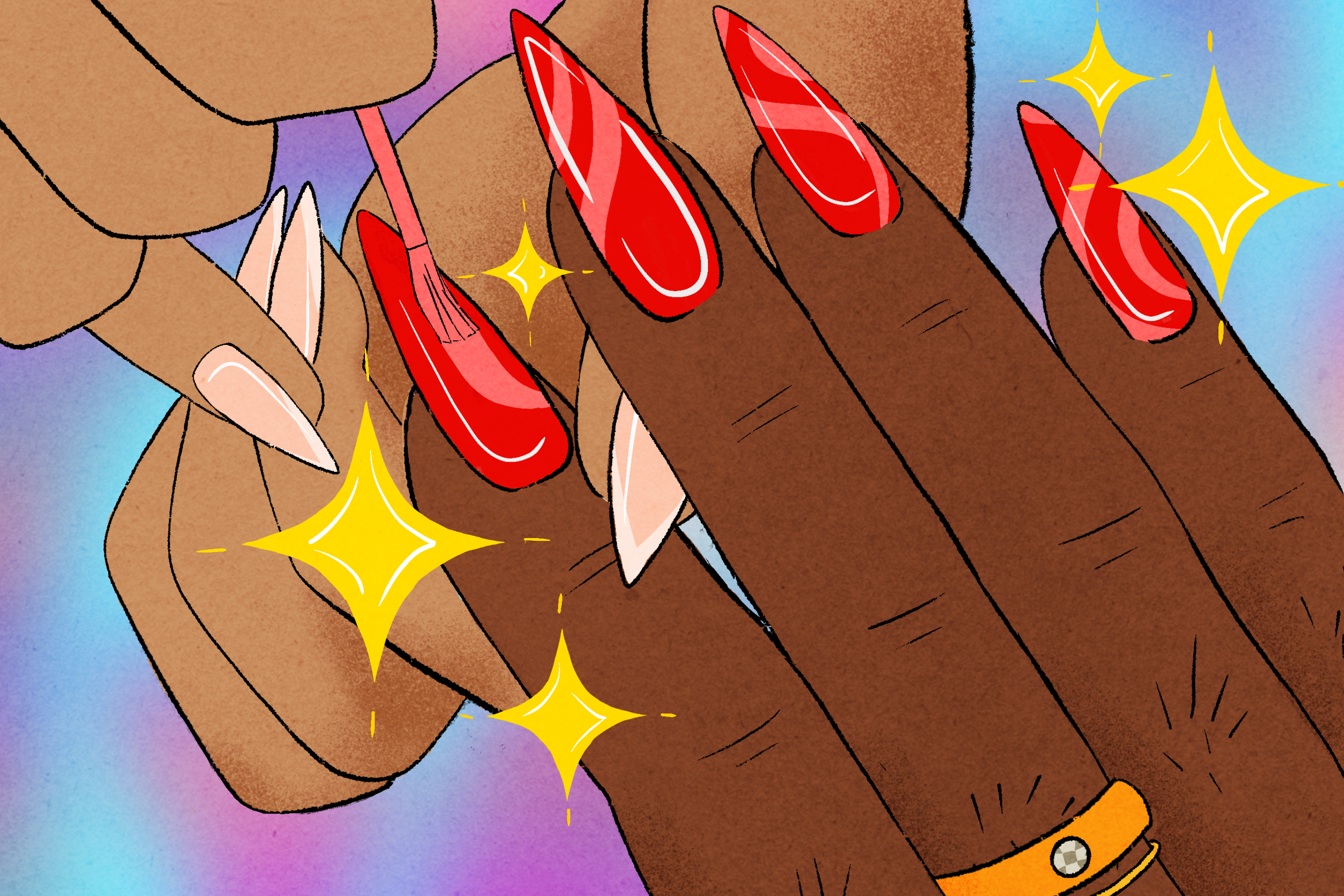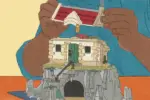How have different societal factors influenced the market for nail enthusiasts?
Fingernails have always been an inspiration for human creative expression. The first recording of nail painting was in China in 3000 B.C. At the time, the more length and decoration your nails had, the higher the wearer’s social status At that time, materials such as beeswax, egg whites, and Arabic gum were used to color nails. This practice was treated as so sacred, that in various areas of China, using certain nail colors such as red, which were exclusive to royals, was punishable by death. As societies evolved, so did the significance and techniques of nail art. But, its enduring appeal as a means of self-expression and social status remains a constant throughout the ages.
Since nail artist Bernadette Thompson tore a one-dollar bill to seal onto Lil Kim’s nails for her Get Money music video, creative and elaborate nail art has been in high demand for both celebrities and everyday people alike. When many nail art styles have gone viral, from Hailey Bieber’s Glazed Donut nails to Dua Lipa’s Pink Aura nails, fans attempt to recreate them. This doubly increases demand by clients to nail technicians.
The more innovative looks become viral on social media, the more creative nail artists have to be to stand out. With modern technology and the awareness of social issues such as global warming, many nail brands have created new innovations when it comes to nail art to match the modern needs of nail enthusiasts. Even though the need for nail art has shifted since 3000 B.C. to today, the demand for nail artistry remains the same. New creative ideas have finally been added to the industry, and they are starting to gain popularity.
With the rise of global warming and pollution, a market for non-toxic nail polish has been created. Regular nail polish includes volatile organic compounds (VOCs) which we recognize as the strong scent of chemicals from nail polishes as well as other nail products. When used, the VOCs are released into the air which harms the earth and encourages air pollution. Another concern mentioned is how nail products such as gel polish, nail polish, acrylic powder, and acrylic monomer are not biodegradable. These products can sit in landfills and exude toxic chemicals such as toluene, formaldehyde, and dibutyl phthalate into the soil which are detrimental to the planet. Choosing non-toxic nail polish is also better for your health as toluene, formaldehyde, and phthalate all have a negative impact on one’s health. Their side effects include neurological and reproductive issues at low-level exposure and can exacerbate respiratory problems. While this awareness of the global climate is becoming more well-known thanks to globalism and the internet, other alternatives can also cater to one’s need to have a guilt-free manicure
@nail3d, a recent TikTok nail artist, creates nail tips from his 3D printer. His most popular designs range from skulls, mermaid scales and french nails with bows. The 3D-printed nails are created out of resin and have up to three weeks of wear. Since the 3D-printed nails are created in advance, customers do not have to worry about shaping the nails or molding a design out of builder gel. When customers purchase these nails, they simply have to color the clear nail tips with one’s preferred gel color or acrylic paint of choice. 3D-printed nail tips can be convenient for those who may not have the time to sit in a nail technician’s chair for one to two hours. While the market for 3D-printed nails is fairly new, there are some benefits that come with this creation. With this invention, it gives more time for nail artists to focus on coloring the nail tips with gel color, instead of shaping the tip from scratch with a regular plastic nail tip and acrylic powder. If this became more mainstream and commercially widespread, using 3D-printed nail tips in nail salons would create a more convenient customer experience. It would achieve this by shaving off the time it takes to do a set of acrylic nails.
While this product has many benefits in the nail scene, there are still some issues that need to be worked out when it comes to 3D-printed nails. While the nail tips are being marketed for their longevity, YouTuber Emily Susanah has tested them out herself. When she shared the updates from her wear, she explained that after she had taken a hot shower, the nails had started to bend upwards. The cost of a set of acrylic nails usually ranges from $25-$125, but can last over four weeks. Also, the price to buy a set with all the materials needed to create a manicure with acrylic nails at home only costs $39.99. With this DIY package, you can create more than one set of nails, while one set of 3D-printed nails costs $64.00. An expensive set which, according to Susanah, only lasts a few days. Even a set of regular press-on nails with nail glue lasts from 10 days to two weeks with the proper application.
The emergence of 3D-printed nail tips marks a significant step forward in the evolution of nail art, blending technology, convenience and creativity in an unprecedented manner. This innovation has the potential to revolutionize the nail industry, offering a solution to time constraints and providing endless possibilities for personalized designs. By streamlining the nail application process, 3D-printed nails could enhance the overall customer experience, allowing more time for intricate detailing and customization.
However, despite the promising aspects of this technology, there are still some challenges that need to be addressed, such as durability and cost-effectiveness. As demonstrated by YouTuber Emily Susanah’s experience, there are concerns compared to traditional acrylic or press-on nails. Additionally, the higher price point of 3D-printed nails may deter some consumers, especially when considering the relatively short lifespan of the product. Moving forward, it will be essential for manufacturers to refine their processes and address these issues to ensure that 3D-printed nails become a viable and sustainable option for nail enthusiasts. Ultimately, while there may be hurdles to overcome, the potential benefits of this innovative technology suggest a promising future for the intersection of nail art and modern technology.
In the landscape of nail art, the emergence of 3D-printed nail tips and non-toxic nail polish represents a significant leap forward, combining technology with convenience and creativity in a new way. This innovative approach holds promise for revolutionizing the nail industry, offering solutions to time constraints and opening up endless possibilities for personalized designs. By simplifying the nail application process, 3D-printed nails have the potential to elevate the overall customer experience and planet Nevertheless, as with any new technology, there are challenges to overcome, including concerns regarding durability and cost-effectiveness. The experiences shared by influencers like YouTuber Emily Susanah highlight the need for manufacturers to refine their processes and address these issues to ensure the widespread adoption of different nail inspirations. Despite these hurdles, the potential benefits of this cutting-edge technology suggest a bright future for the intersection of nail art and modern innovation.
















